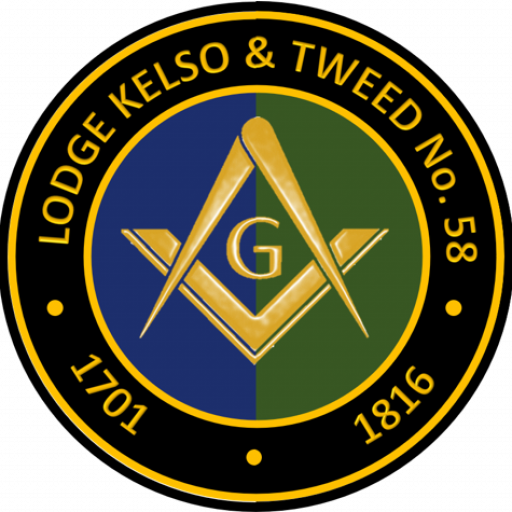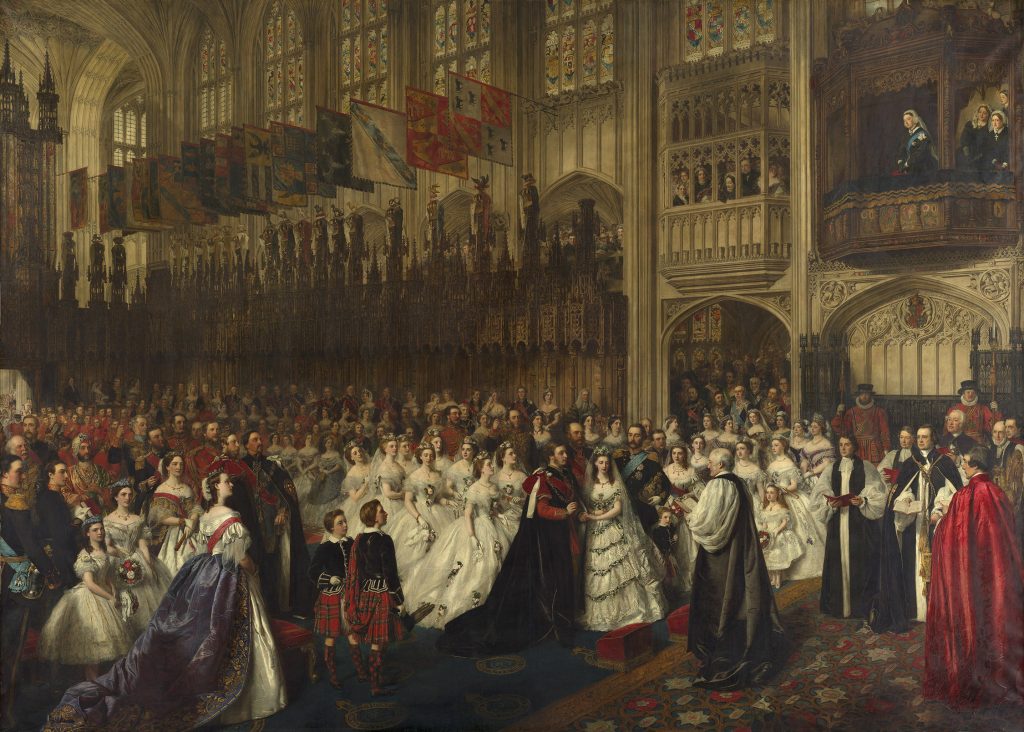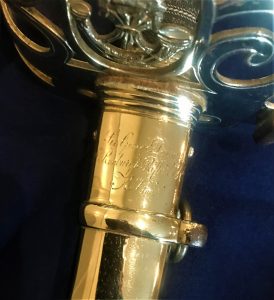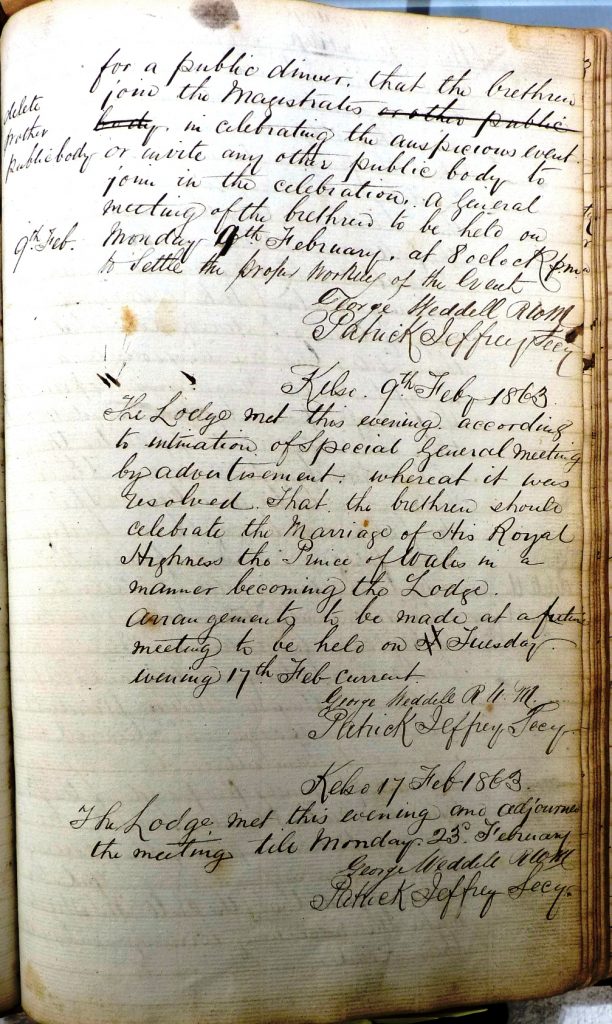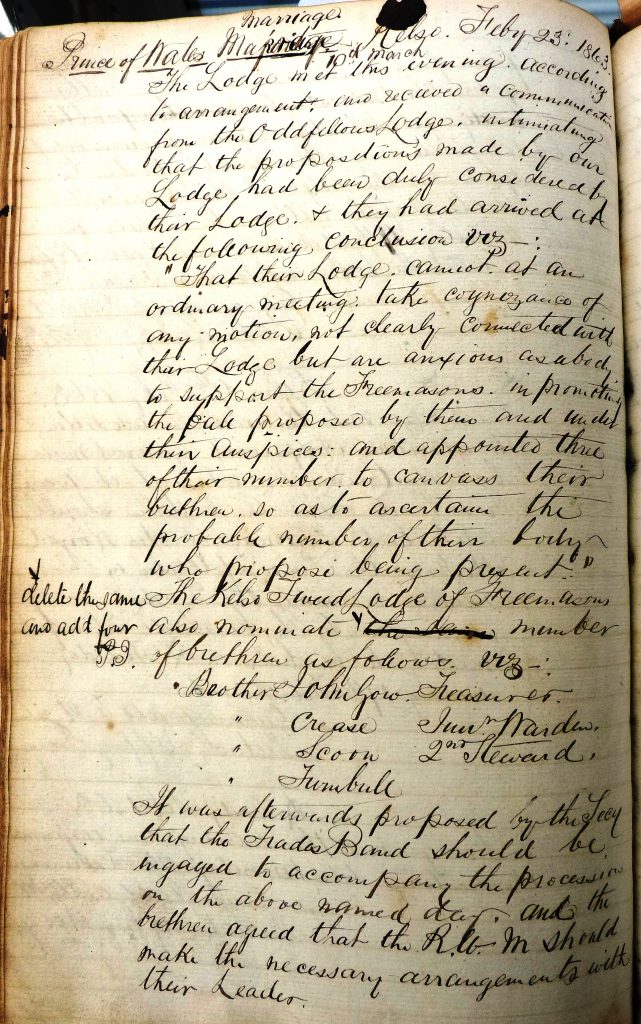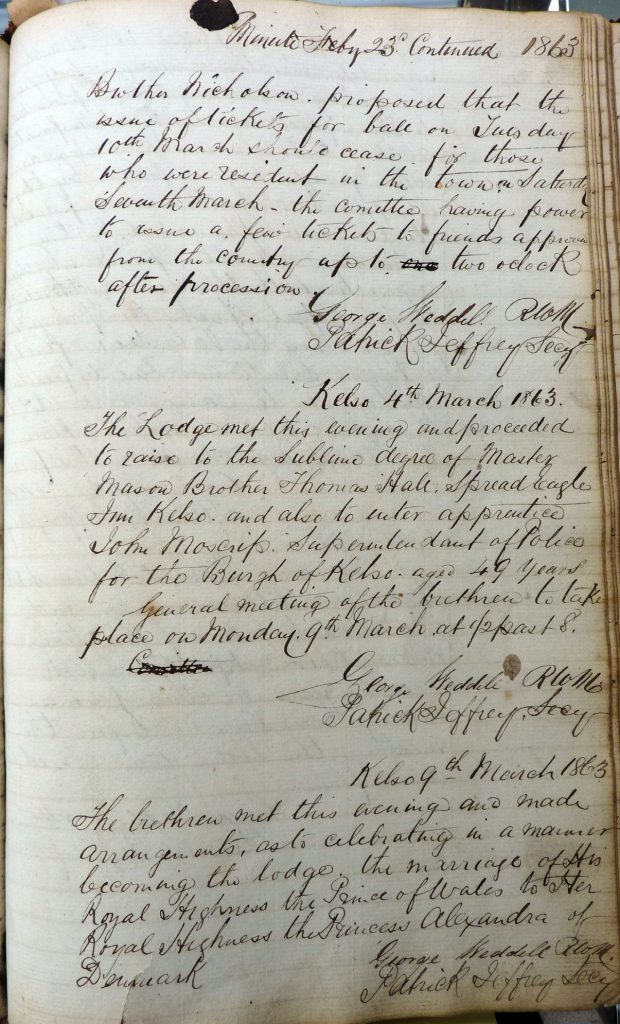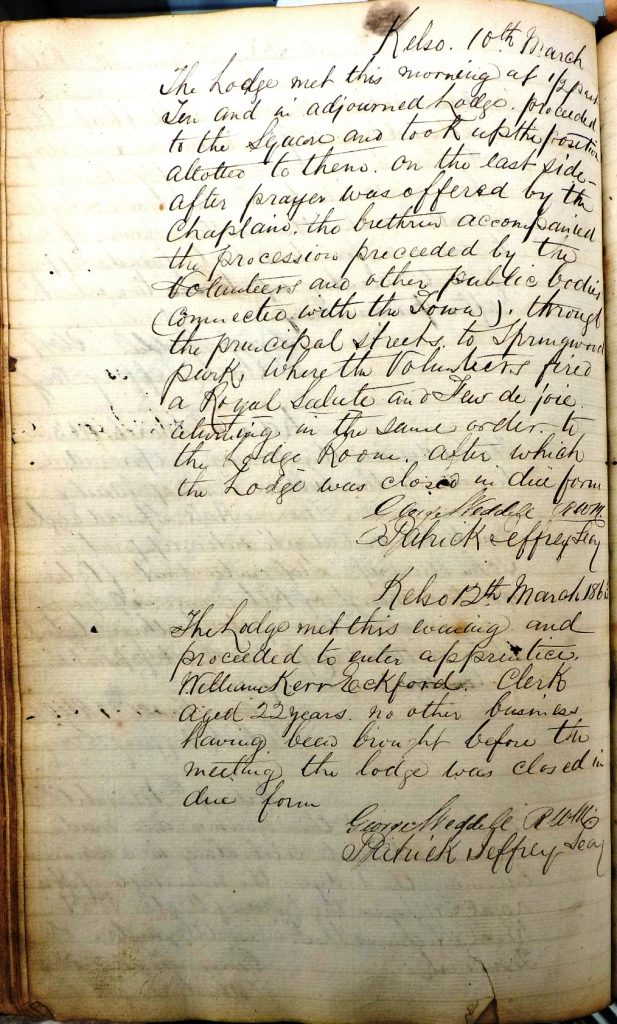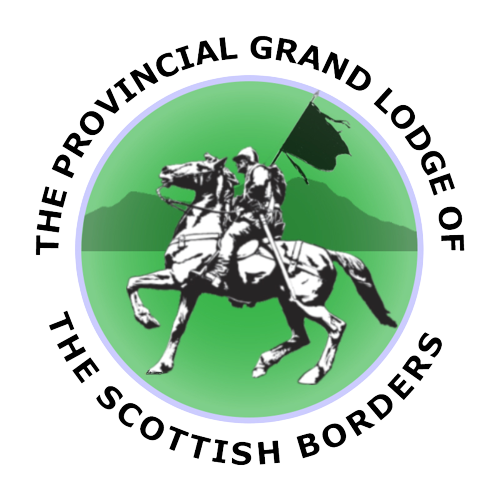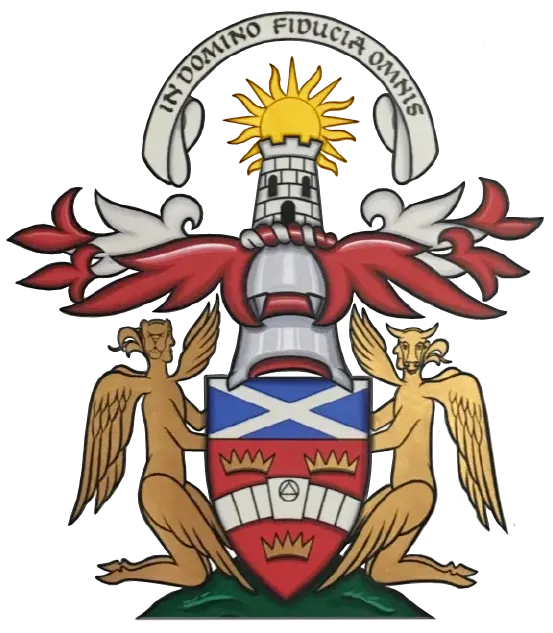“The procession was accompanied by the band of the 2nd Roxburghshire Volunteers, and the band belonging to his Grace the Duke of Roxburghe, and was accompanied along the line of route by an immense concourse of spectators. After marching through the principal streets, the procession took its way to the Square. The Rev Mr Smith then offered up a most appropriate and impressive prayer, imploring the Divine blessing on the union of the Prince and Princess of Wales. A feu de joie was then fired by the Volunteers, and a royal salute from several large brass guns stationed in the park. The procession then re-formed and proceeded to the Square of Kelso, where the different public bodies adjourned to their respective lodge rooms.
In the afternoon, a public dinner of the inhabitants was held in the Town Hall, which was profusely decorated for the occasion. The chair was occupied by Mr John Usher, Stodrig (in the absence of Mr J S Darling, senior magistrate, from the cause stated above); and the croupier’s chair was filled by Mr Balman, builder. The usual loyal and patriotic toasts were given and responded to in the most hearty manner; and the toast of the evening was received with unbounded enthusiasm. A number of loyal and personal toasts followed, and the evening was spent in the utmost harmony.
Towards night a huge bonfire was lighted in the Market Place—the wood of which had been kindly granted by Sir George Douglas, Bart, and an immense crowd enjoyed themselves in the Square for several hours, by firing off squibs, and other descriptions of fireworks.
A soiree was also held in the evening, in the Corn Exchange, “under the auspices of the ladies of Kelso,” which was pretty well attended. The chair was occupied by Mr Thomas Mitchell, draper, and addresses were delivered by several clergymen and laymen. The proceedings were varied by the singing of several songs by amateurs, including an original song composed for the occasion by Mr Usher, Stodrig, and the playing of a German band. Tea was served by a number of ladies, and the meeting was kept up with spirit for several hours.
Among the many displays of loyalty here, none were more conspicuous than those which took place on the property of Mr Robertson of Ladykirk, MP, the Lord-Lieutenant of Berwickshire, on the northern division of his estate in the pariah of Gordon – a short distance from Kelso. Some time ago, Mr Robertson intimated to his tenantry that he would not only grant all the materials for bonfires, but would in any other way contribute to such a laudable mode of rejoicing. Conspicuous among the many fires that studded the various hills in this district was one erected by Mr Henderson, Middlethird, on the crag to the east of the farmsteading. There was no lack of refreshments, and the health of the Royal couple was pledged with the utmost enthusiasm. Dancing afterwards commenced, and was carried on till an early hour. Huge bonfires also blazed on the farm of Eastfield, near Greenlaw, and an immense concourse of Greenlaw people gathered round Mr Grieve as he set it on fire.
Here also, as well as in several other places, the healths of the newly-married pair were pledged in a genuine bumper, and mirth and music everywhere prevailed. We question much whether any other district of the country showed more heartfelt loyalty on this occasion than did the town and district of Kelso”.
